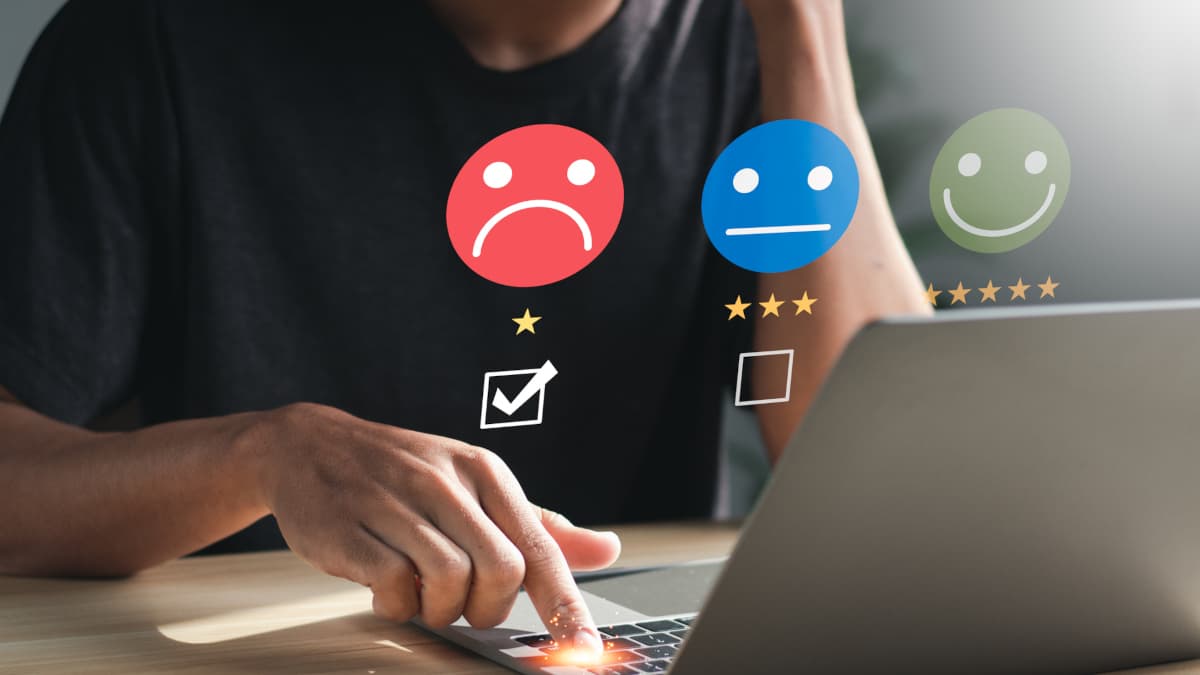Three of four Germans use emojis in their online communications – many of them even in their job. Find the answers here to how these pictograms can benefit your marketing and whether they have a place in the B2B segment.

Emojis are established in online communication
There is hardly a form of online communication amongst the youth and young adults that does not include emojis. Today, more than 3,500 of these pictograms are available, which can underscore emotions and written statements, for instance as symbols of agreement, rejection or irony.
But older people, too, are increasingly becoming used to the use of smileys and other emojis – according to the Digitalverband Bitkom (publication in German). In 2022, Germany’s digital association found that around 74 per cent of the people in Germany use the symbols, which were originally known as emoticons. More than one-fifth of those surveyed said that they now use the pictograms in every message. One-fourth includes them in most of the messages they send.
And: more than one-third of professionals who use emojis also do so at their job. Mainly in chat and messenger programs with other colleagues are the pictograms a matter of course. A good one-fifth even use emojis in emails, newsletters or other messages to customers or business partners. This means emojis have definitively become part of business conversations.
How emojis can benefit marketing
Marketing departments, too, are increasingly using various emojis. If you want to reach a relatively young target group, it is best to speak their language and hope for positive feedback. With the matching emojis, you can get to the point of your advertising message faster, and rather negative messages can be dampened with the use of a positive emoji. On top of this, visual stimuli are stored in the brain better than just words.
Particularly in the area of social media marketing are emojis suitable to use, as they can express in a single symbol what would otherwise require lots of characters. And not just characters are limited in postings, so, too, is the capacity of social media users to take in information and to have a longer attention span.
Whether emojis have a positive or negative effect when placed in the subject lines of newsletters is a matter of discussion. Studies have come to differing findings in terms of open rates and click through rates.
In the end, it all depends on how a company or brand wants the public to be aware of them. If you want to be seen as humorous and young toward your target group, funny or extravagant, you should bank on emojis as a marketing tool – compared to companies or brands which want to portray themselves as being serious or who offer a particularly high level of quality.
1,3 million professional buyers are waiting for you!
Present your product range online to buyers and make sure that your company is visible to the right people. Expand your internet presence with a free profile on wlw.
Emojis in B2B: when and where it is appropriate to use them
And the latter is also why emojis play a strongly under-represented role in B2B marketing. The products and services are often costly and complex. The communication on an emotional level does not fit so well.
In the business realm, emojis are not always recommended. A study found that people are considered to be less powerful and competent when they use pictures instead of words – and this also includes emojis. Particularly in the B2B segment do many companies claim to be one of the absolute authorities in their niche market.
Generally speaking, you should take care when using various designs of individual emojis. A Fraunhofer study (German) from 2021 came to the finding that some emojis, such as a blushed face or a cheekily grinning cat, can cause confusion. Mainly in the group of the so-called digital immigrants, in other words the people who did not grow up with smartphones, tablets and instant messengers, can emoji marketing be misunderstood.
At the same time, the right pictograms can have the effect of making the often facts-based B2B communication more appealing, easier to understood and more entertaining. They break up the text landscape and help to structure the information by offering visual variety.
And not to forget: the upcoming generation of decision-makers in business expect a purchasing experience that is similar to that in the private B2C segment. Which is why they are used to emojis in online communications. Many worries, therefore, that the target group will be put off are presumably exaggerated.
